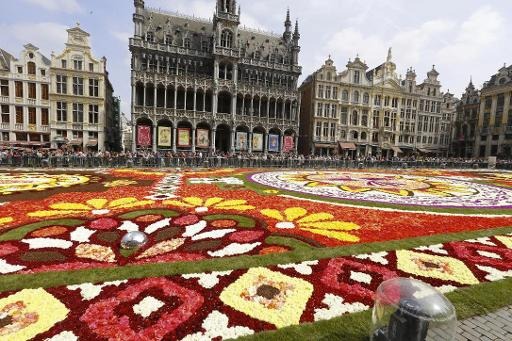The first test results of scanning “underneath” the Grand-Place were presented by researchers on Tuesday evening at Brussels City Hall. Researchers from the CReA-Heritage (Research Centre for Archaeology and Heritage), in collaboration with French and Italian counterparts, looked under the Grand-Place and the neighbouring streets in May 2018, scanning the archaeological sub-stratum using two non-invasive techniques, namely ground radar and electrostatic prospecting.
These new techniques have enabled a three-dimensional mapping of structures and objects buried under the historic heart of Brussels.
A large number of underground structures that correspond to different stages of development are revealed by the series of images. They provide information on its formation and evolution from the Middle Ages to modern and contemporary eras.
"This data is complementary to and gives meaning to written and iconographic archives. It is a sort of genesis of the Grand-Place, for which there was almost no data," Free University of Brussels (ULB) Middles Ages Art and Archaeology Professor François Blary explained.
The researchers identified various hidden networks (water supply and purifying systems in particular) and the locations of various fountains that adorned the Grand-Place between the 14th and 17th centuries.
They also discovered earlier medieval habitat structures that date previously to the origin of the Grand-Place site. Before the 1695 bombing by King Louis XIV French troops, "the Place was smaller so that traces of preserved houses are perfectly visible," Blary continued.
"The Grand-Place had been expanded (after the bombing, ed.); the two pillar elements, la Maison du Roi and l'Hôtel de Ville, had been perfectly preserved in situ, but the rest had been totally remodelled.
We long believed that everything had been completely rebuilt after 1695, but many Medieval elevated elements had been integrated into the reconstruction. In fact, the facades were redone, but on already existing Medieval dwellings which, for some, had remained standing."
The results will soon be published in scientific articles. CReA-Heritage groups all of the Free University of Brussels (ULB) research programmes in the fields of archaeology and heritage.
The Brussels Times

